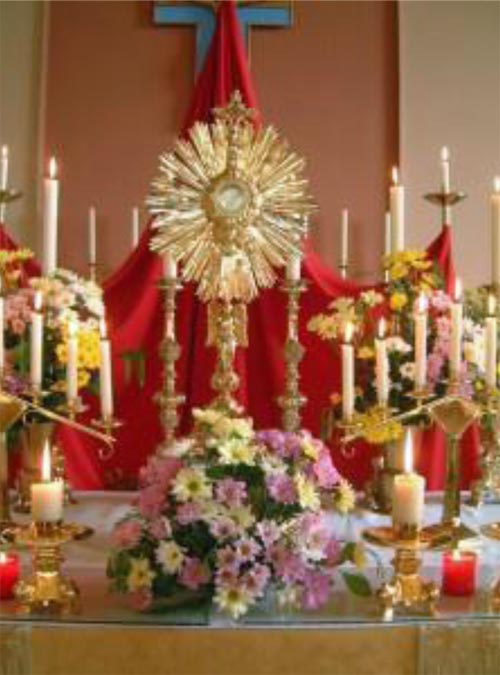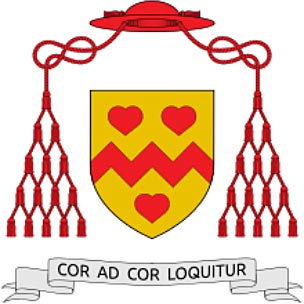St. Wulstan’s Church, Every first Tuesday of the month after the 10.00am Mass.

From the very beginning Christians began reserving part of the Eucharist for the communion of the sick. That practice grew eventually into the Adoration of Bread of Life, namely the very Flesh of our Lord Jesus Christ. That brought about a Eucharistic Renaissance led by Pope Saint Gregory VII in the 11th century.
“I believe in my heart and openly profess that the bread and wine that are placed on the altar are, through the mystery of the sacred prayer and the words of the Redeemer, substantially changed into the true and proper and lifegiving flesh and blood of Jesus Christ our Lord, and that after the consecration they are the true body of Christ”
At the beginning of the 13th century St Francis of Assisi preached about the importance of Adoring Jesus Christ present in the Eucharist. It was easily spread by his friars around Italy and beyond. For St Francis in the Eucharist Jesus continues his Incarnation in the world. In fact he wrote in what we consider his Testament:
“…the Lord gave me, and gives me still, such faith in priests who live according to the rite of the holy Roman Church because of their orders that, were they to persecute me, I would still want to have recourse to them…..And I act in this way because, in this world, I see nothing physically of the most high Son of God except His most holy Body and Blood which they receive and they alone administer to others. I want to have these most holy mysteries honoured and venerated above all things and I want to reserve them in precious places.”
Finally in 1264 the Feast of Corpus Christi (Body of Christ) was instituted by Pope Urban IV. St. Gertrude, a 14th century Benedictine nun and mystic, taught that looking upon the Sacred Host was a meritorious act. By the 15th century Exposition in churches and processions of the Blessed Sacrament had become amazingly popular. During the second half of the 20th century, in some parts of the world such devotions declined because of a misunderstanding of some theologians, clergy and laity, regarding the liturgical reforms that were developing after the Second Vatican Council.
Thankfully, in recent times devotion to the Blessed Eucharist has seen a return with a great revival.
In our Parish during adoration and benediction we pray and ask God to take care of us and all that belongs to us.
Displaying the Most Blessed Sacrament is meant to promote the adoration and worship of Jesus in his hidden but real Presence in the Eucharist. All are welcome to join our worshipping and adoring community.
Short visit to the Blessed Sacrament
(John Henry Cardinal Newman)
I place myself in the presence of Him, in whose Incarnate Presence I am before I place myself there.
I adore You, O my Saviour, present here as God and Man, in Soul and Body, in true Flesh and Blood.
I acknowledge and confess that I kneel before the Sacred Humanity, which was conceived in Mary’s womb, and lay in Mary’s bosom;
which grew up to man’s estate, and by the Sea of Galilee called the Twelve, wrought miracles, and spoke words of wisdom and peace;
which in due season hung on the cross, lay in the tomb, rose from the dead, and now reigns in heaven.
I praise and bless, and give myself wholly to Him, Who is the true Bread of my soul, and my everlasting joy.
Amen.

